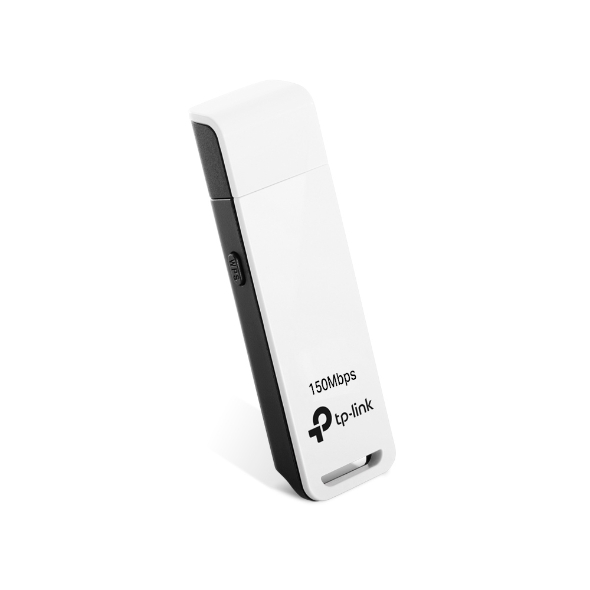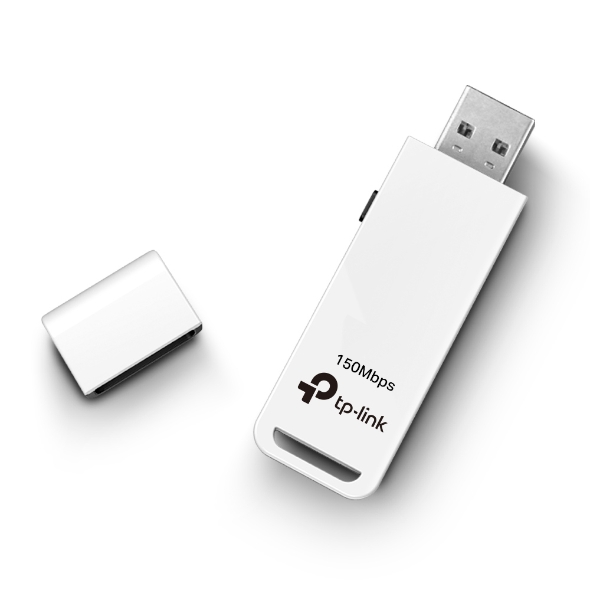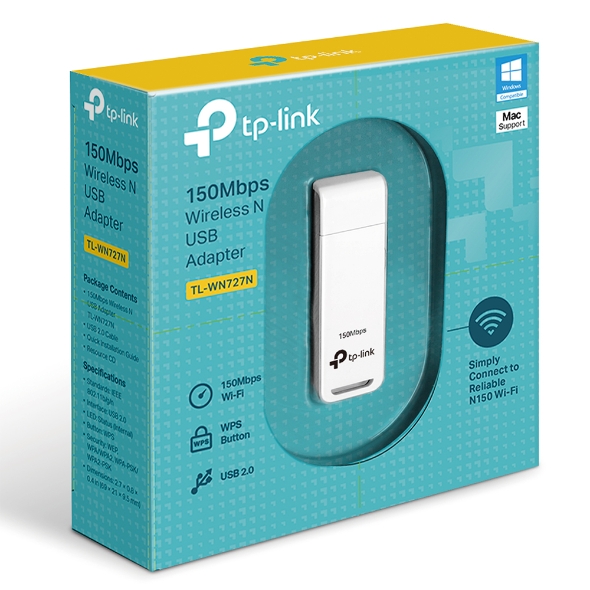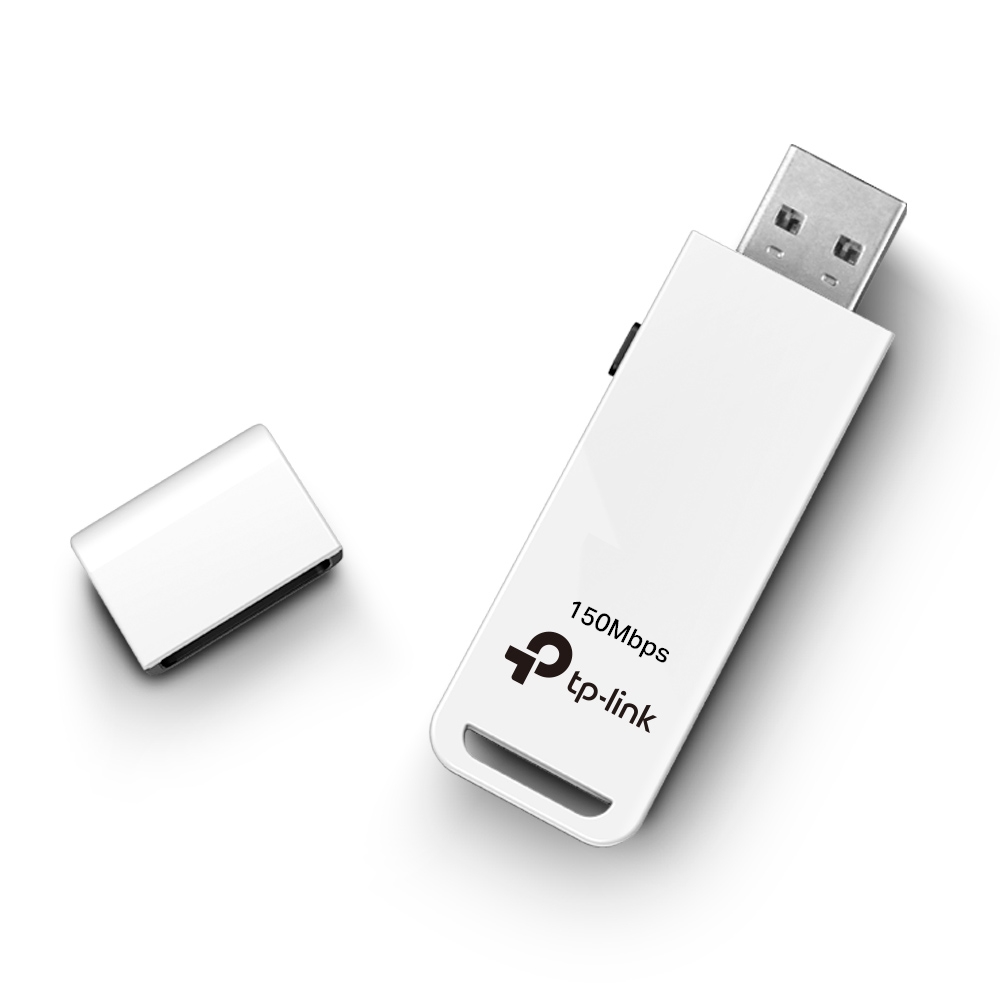TL-WN727N
150Mbps Wireless N USB Adapter
- Excellent N speed up to 150Mbps brings best experience for video streaming or internet calls
- Easy wireless security encryption at a push of the WPS button
- Supports Windows 11/10/8.1/8/7/XP, Mac OS 10.15 and earlier, Linux
| HARDWARE FEATURES | |
|---|---|
| Interface | USB 2.0 |
| Button | WPS Button |
| Dimensions ( W x D x H ) | 2.7 x 0.8 x 0.4 in. (69 x 21 x 9.5 mm) |
| Antenna Type | Internal |
| WIRELESS FEATURES | |
|---|---|
| Wireless Standards | IEEE 802.11n, IEEE 802.11g, IEEE 802.11b |
| Frequency | 2.400-2.4835GHz |
| Signal Rate | 11n: Up to 150Mbps(dynamic) 11g: Up to 54Mbps(dynamic) 11b: Up to 11Mbps(dynamic) |
| Reception Sensitivity | 130M: -68dBm@10% PER 108M: -68dBm@10% PER 54M: -68dBm@10% PER 11M: -85dBm@8% PER 6M: -88dBm@10% PER 1M: -90dBm@8% PER |
| Transmit Power | <20dBm(EIRP) |
| Wireless Modes | Ad-Hoc / Infrastructure mode |
| Wireless Security | Support 64/128 bit WEP, WPA-PSK/WPA2-PSK |
| Modulation Technology | DBPSK, DQPSK, CCK, OFDM, 16-QAM, 64-QAM |
| OTHERS | |
|---|---|
| Certification | CE, FCC, RoHS |
| Package Contents | Wireless Adapter One USB extension cable Resource CD Quick Installation Guide |
| System Requirements | Supports Windows 11/10/8.1/8/7/XP,Mac OS 10.15 and earlier,Linux |
| Environment | Operating Temperature: 0℃~40℃ (32℉~104℉) Storage Temperature: -40℃~70℃ (-40℉~158℉) Operating Humidity: 10%~90% non-condensing Storage Humidity: 5%~90% non-condensing |
- Awards
-
-
 TesztgyőztesTL-WR740N & TL-WN727N received 'Tesztgyőztes' awards from PC WORLD in Hungary2010, Hungary
TesztgyőztesTL-WR740N & TL-WN727N received 'Tesztgyőztes' awards from PC WORLD in Hungary2010, Hungary
-
† Maximum wireless signal rates are the physical rates derived from IEEE Standard 802.11 specifications. Range, coverage, and the maximum number of connected devices are based on test results under normal usage conditions. Actual wireless data throughput, wireless coverage, and number of connected devices are not guaranteed and will vary as a result of 1) environmental factors, including building materials, physical objects, and obstacles, 2) network conditions, including local interference, volume and density of traffic, product location, network complexity, and network overhead, and 3) client limitations, including rated performance, location, connection quality, and client condition.











